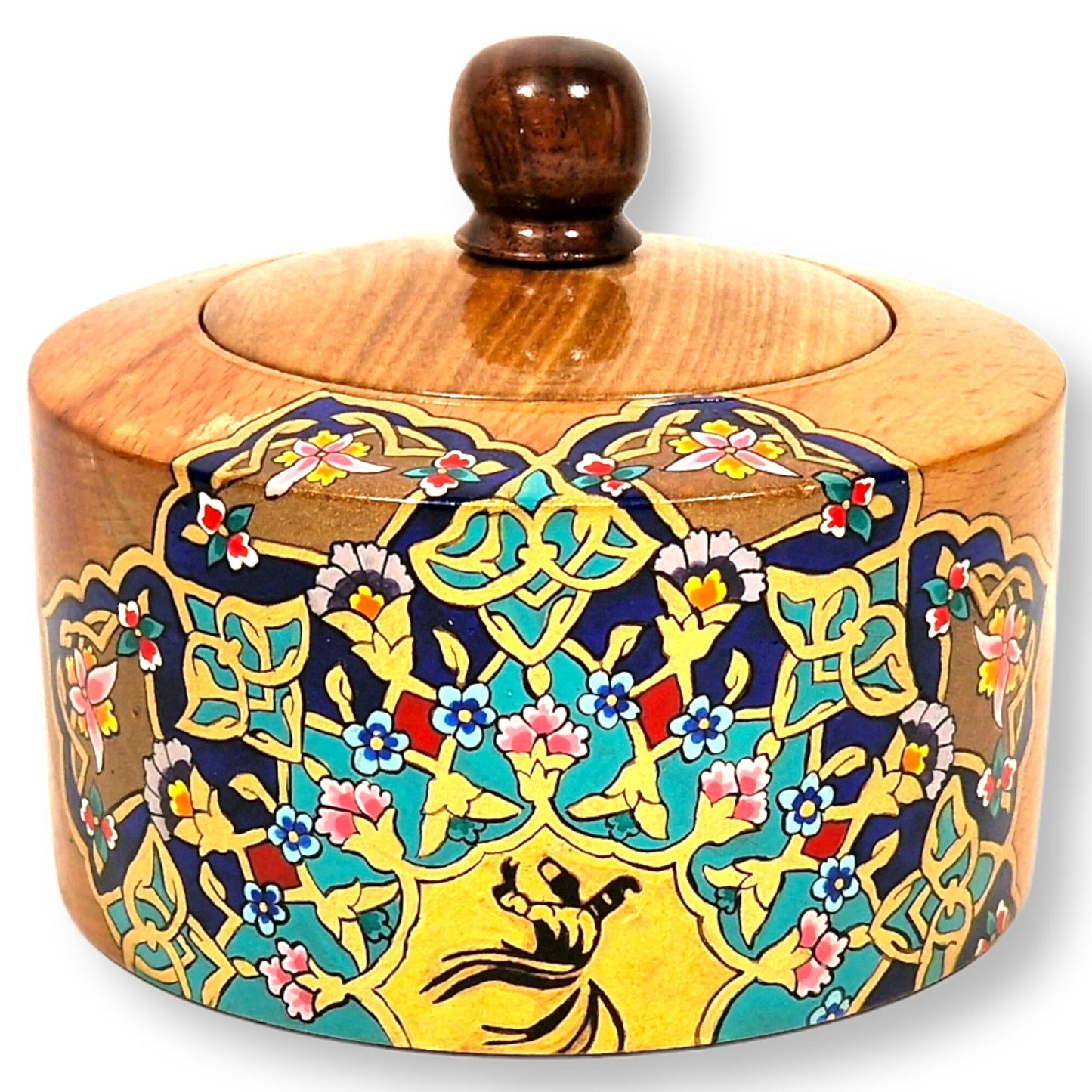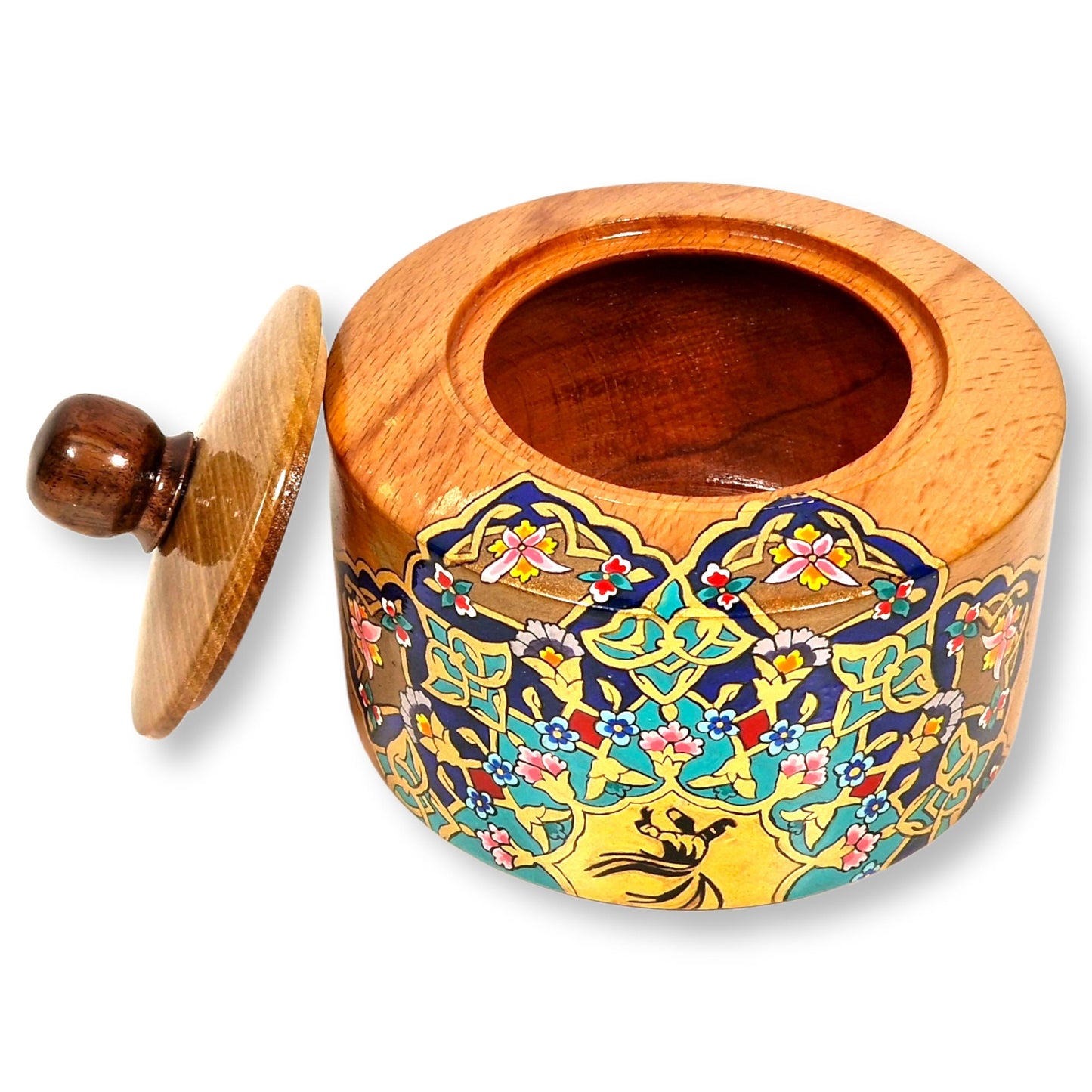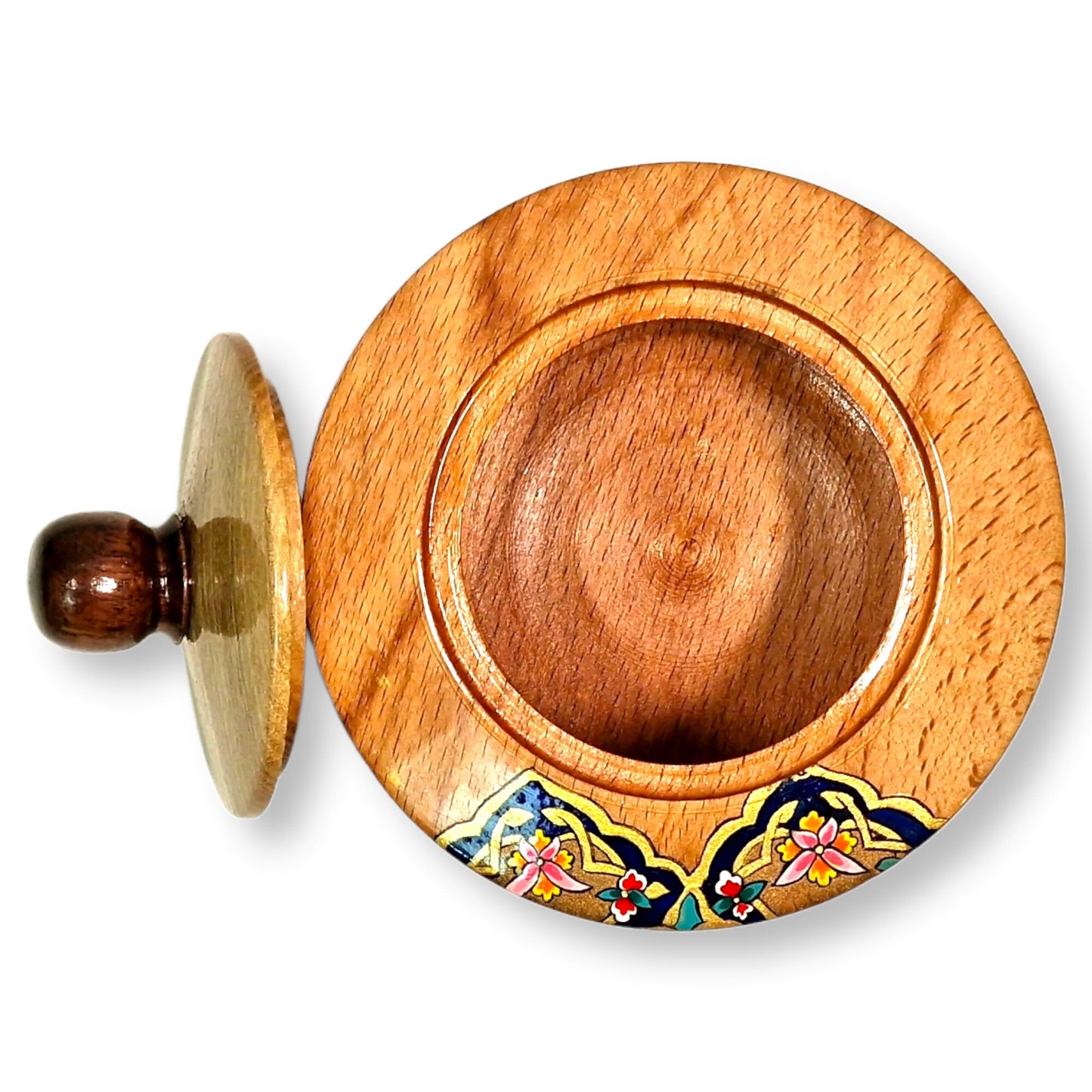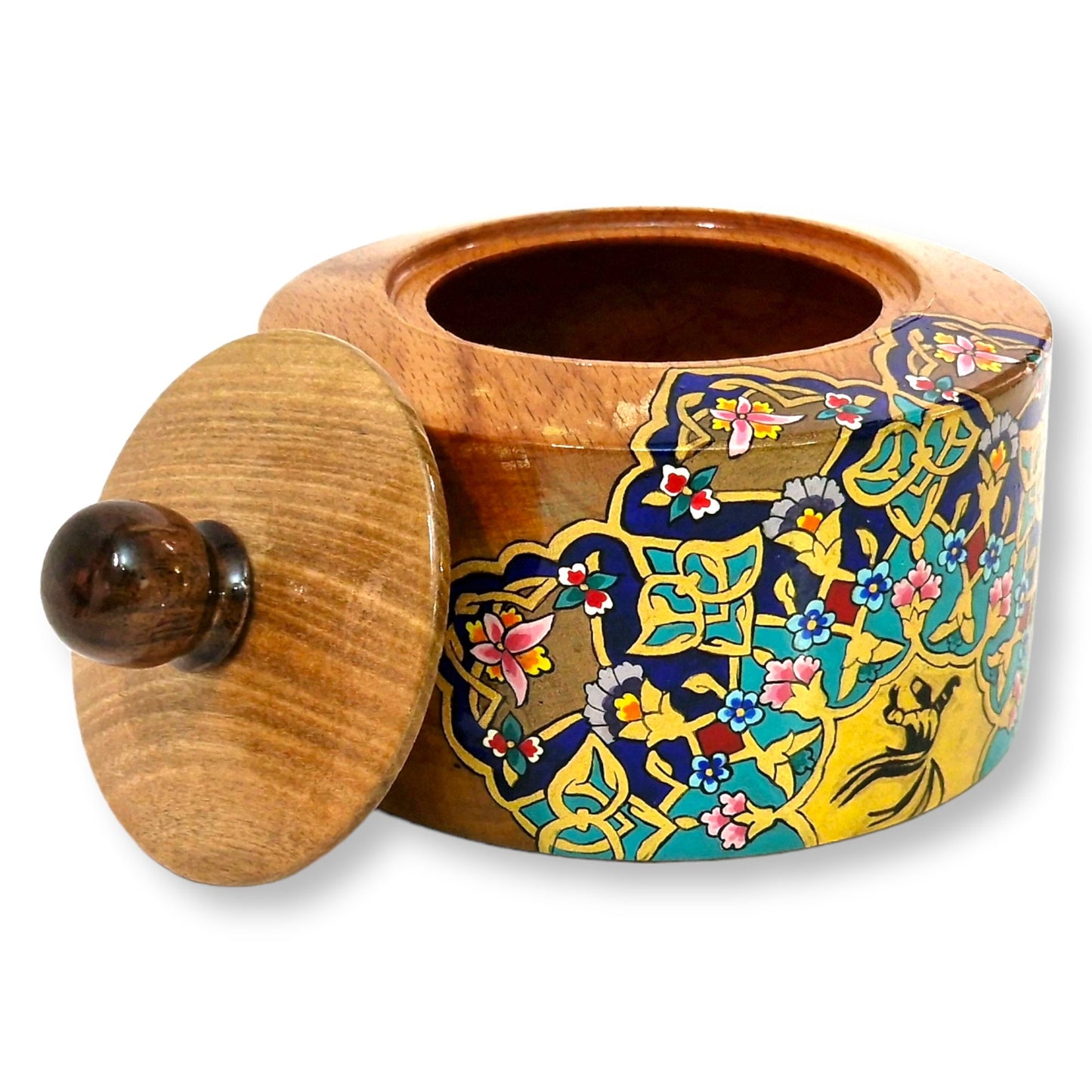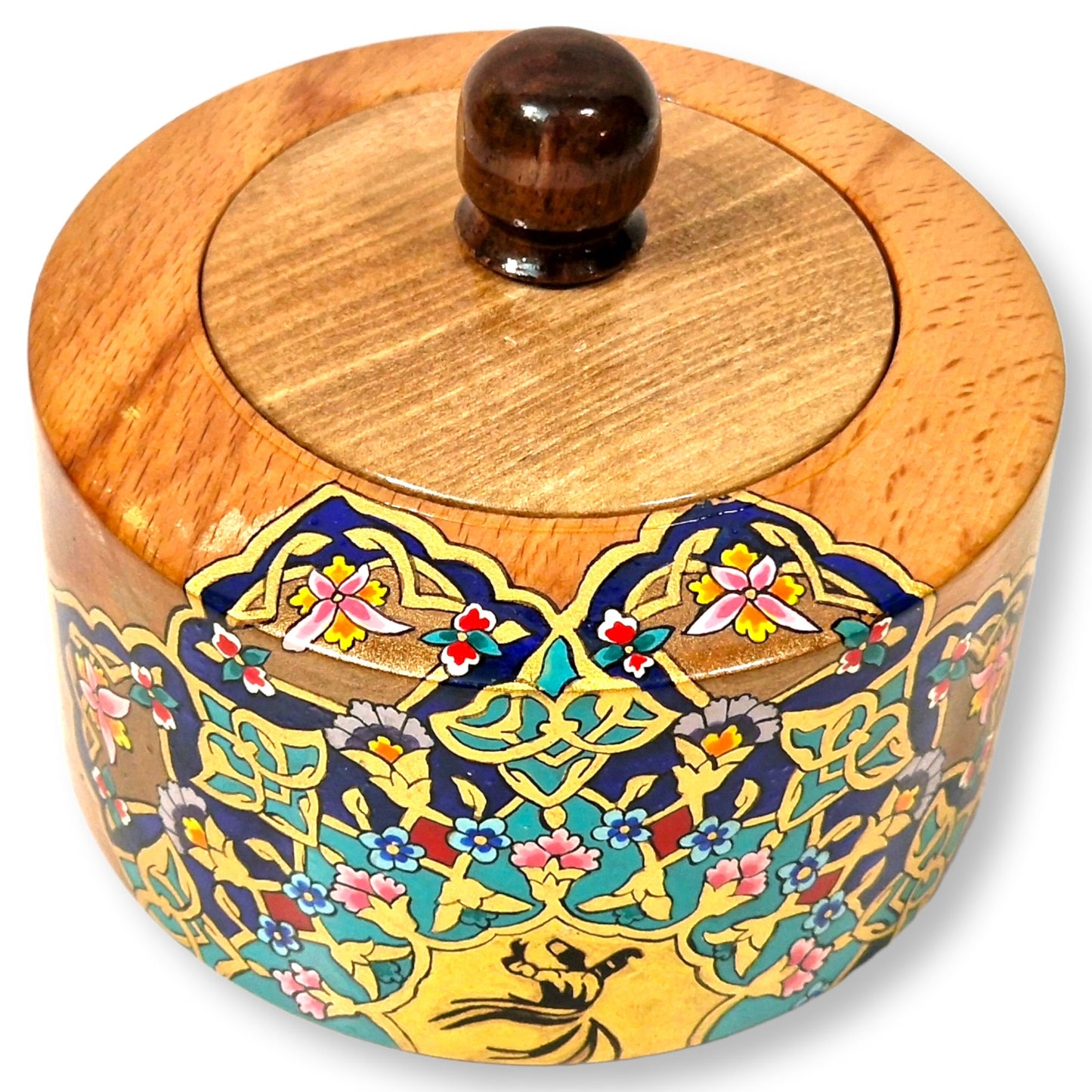Kervansara
Decorative sugar bowl made of beech wood hand-drawn using the Persian art of "Tazhib"
Decorative sugar bowl made of beech wood hand-drawn using the Persian art of "Tazhib"
Couldn't load pickup availability
Sugar bowl made of beech and walnut wood, 10 x 12 cm, hand painted with an original design of "Tazhib", the traditional and delicate art of illumination interweaving colorful floral and geometric motifs around the figure of a dancing dervish representing the mystical whirling meditation ceremony known as "Sema", a dance of love and unity. This has been part of UNESCO's Intangible Cultural Heritage of Humanity since 2008 in the Turkey section.
The term dervish comes from the Persian "درویش (darvīsh)", just as the spiritual movement of Sufism, of which they are members, originated there. The Mevlevi order of Turkey is very famous, founded by the disciples of the famous Persian poet and scholar Jalal al-Din Muhammad Rumi in the 13th century and based in Konya, where his tomb and museum can be visited.
The surface is coated with vegetable oil to protect such a precious material and give it shine, while allowing it to be washed by hand. This original way of adapting and applying this ancient art to all kinds of wooden utensils is of exceptional beauty and creativity.
Gold has always been synonymous with value and its colour has been considered supernatural and sacred, being related to virtues such as delicacy, creativity or patience. The exquisite art of illumination consisted precisely in embellishing the pages of manuscripts, whether literary, historical or religious, by means of gilding, especially those of the sacred book of the Muslims after the introduction of Islam in Peria.
It is believed that the first Imam of the Shiites, Ali, was also the first to decorate the Quran, but this creative and delicate technique was already very popular before the arrival of this new belief and even the Avesta, the sacred book of Zoroastrianism, was adorned with illuminations. Tazhib was applied in the margins and corners of pages, between lines or verses in poetry books and even decorating calligraphic pieces.
The origins of this art date back to the Sassanid period, where this type of ornamentation was also used on walls and ceramics, but it was not until the Seljuk period, in the mid-12th century, when the first artisan school specialising in this field emerged, and since then its designs have decorated valuable books, monuments and all kinds of utensils. Under the patronage of the Timurids, an empire founded by Tamerlane, of Turko-Mongol lineage, the tazhib reached its peak, leaving us with authentic masterpieces of incalculable value that swell the collections of Persian museums and museums around the world.
It is worth highlighting the important work of Prince Baysunghur I in the protection and dissemination of the arts; this monarch, a great lover of illumination, painting and calligraphy, founded a library in the city of Herat and managed to bring together great artists from all corners of the empire who created extraordinary books. With the rise to power of the Safavid dynasty, the majestic city of Isfahan would become the centre of the art of calligraphy and gilded illumination.
Among the main schools of this precious craft are the Seljuk, Bukhara, Timurid, Safavid and Qajar, each with its own different branches, which explains the difference in colours or the uneven placement of the designs. The most commonly used in tazhib are two types of patterns: on the one hand, the islimi, originally inspired by the convoluted leaves of vines, which create conventional and abstract foliate designs with uninterrupted spiral tendrils that flow harmoniously thanks to the principle of symmetry; whether in the form of ivy, clover, palm or rose, the repetition of motifs seems endless.
On the other hand, the khatai patterns stand out, a style based on circular designs that create various types of flowers, including the palmette of Shah Abbas, symbolizing those of paradise and where the stems are like a rope where they lie together with the buds, leaves and branches. In ancient times, paints of natural origin, whether vegetable, mineral or animal, and sheets of gold leaf were used in the elaboration of these works. Today, high-quality chemical dyes are also used and many artists continue to keep this wonderful legacy alive, even reinventing it, applying the luxurious and delicate art of illumination to the decoration of all kinds of utensils.
This beautiful technique and the importation of Persian artists had a great influence on the works produced later in Mughal India, the Arab countries and especially in Ottoman Turkey where they founded in Istanbul the first school of the flourishing art of "tezhip", as it would be known from then on among the Turks, giving rise to exceptional works and a style of their own. After the closure of the workshop in Herat its famous director moved to Tabriz and when the Ottoman Sultan Selim I conquered the city at the beginning of the 16th century, he took with him a multitude of manuscripts that after a later treaty would be received as diplomatic gifts and founded the Persian Academy of Painting in the Topkapı Palace where the artists specialized in traditional Persian poetic works.
Share
